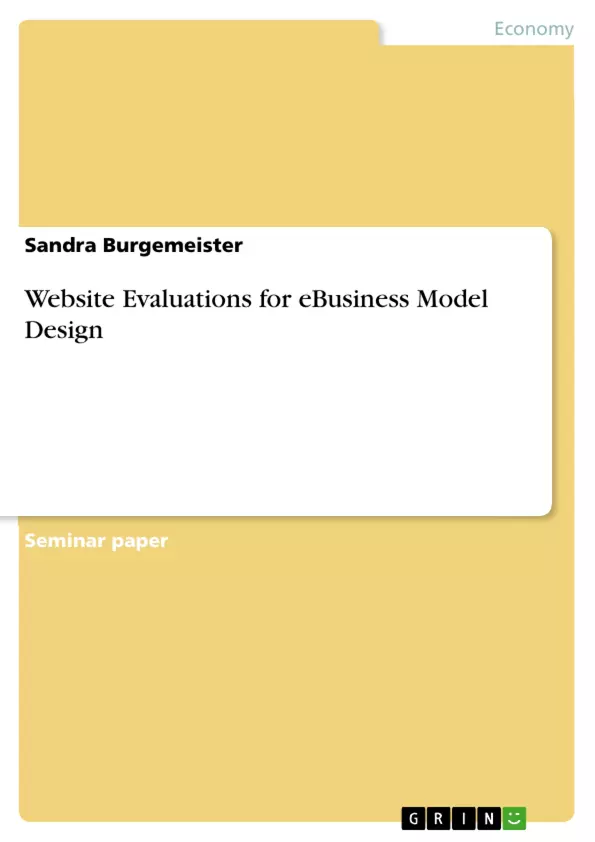Even though the three websites evaluated within this report meet the basic costumer expectation of being visible on the net, they seem to miss the motivation to reconstruct their value chain and build an eBusiness design that could be used as a tool to invent new products from costumer wants. The reverse value chain business model that empowers costumers and encourages interactive communication is therefore not yet fully implemented.
1. Introduction
This report is initiated to discover how much I can learn about eBusiness design by evaluating the business model embedded in three business web sides of my own choice. In order to reflect on the value proposition, the competitive advantage, and the profit performance of three different web sides for later comparison, I found it necessary to analyse three sides that are targeting the same or similar costumer. Each of the three businesses has a different approach to design its eBusiness model and thus offers a variety in how to apply the reverse value chain. Within the following pages, I will evaluate each approach based on my perception of the findings in the three selected web sides:
http://www.wrigley.com/
http://www.stimorol.com/
http://colesonline.com.au/
Table of Contents
- Executive Summary
- Introduction
- Basis of choice
- Business model
- Business performance
- Reverse value chain
- "Wrigley's"
- Business performance
- Competitive advantage
- "Stimorol"
- Business performance
- Competitive advantage
- "ColesOnline"
- Business performance
- Competitive Advantage
- Conclusion
- References
- Books
- Electronic Sources
- Appendices
- Appendix 1: Basis of choice
- Appendix 2: Instrument/measurement tool for gathering and sorting important information from the webside
- Appendix 3: Reasons for choosing the evaluation criteria used in Appendix 2
Objectives and Key Themes
This report aims to explore the concept of eBusiness design by evaluating the business models embedded in three chosen websites. The report focuses on analyzing the value proposition, competitive advantage, and profit performance of these websites, with a particular emphasis on how each business implements the reverse value chain business model.
- EBusiness model design
- Reverse value chain business model
- Competitive advantage in the digital landscape
- Customer empowerment and interaction
- ECommerce integration and online distribution channels
Chapter Summaries
The report begins by outlining the selection of three websites for analysis: Wrigley, Stimorol, and ColesOnline. It then provides an overview of the concept of business models, highlighting the shift brought about by the Internet and the emergence of new business models embedded in the web. The report explores the concept of business performance in the context of these websites, noting the ability for businesses to directly connect with customers through their websites and gather valuable insights. It introduces the concept of eCommerce as a new distribution channel for companies like ColesOnline, which requires a greater financial commitment and a shift in their value chain. The report then delves into the concept of the reverse value chain and its potential to empower consumers and shift the power dynamic between businesses and consumers.
Keywords
This report explores the implementation of eBusiness design models, specifically the reverse value chain business model, in the context of online business. It examines the competitive advantage gained through online presence, customer empowerment, and the integration of eCommerce within the business model. The report also emphasizes the importance of utilizing online platforms for gathering customer data and insights, and highlights the significance of adapting business models to respond to evolving market pressures and customer expectations.
- Arbeit zitieren
- Dipl. Betriebswirtin, MBA Sandra Burgemeister (Autor:in), 2002, Website Evaluations for eBusiness Model Design, München, GRIN Verlag, https://www.grin.com/document/9215



